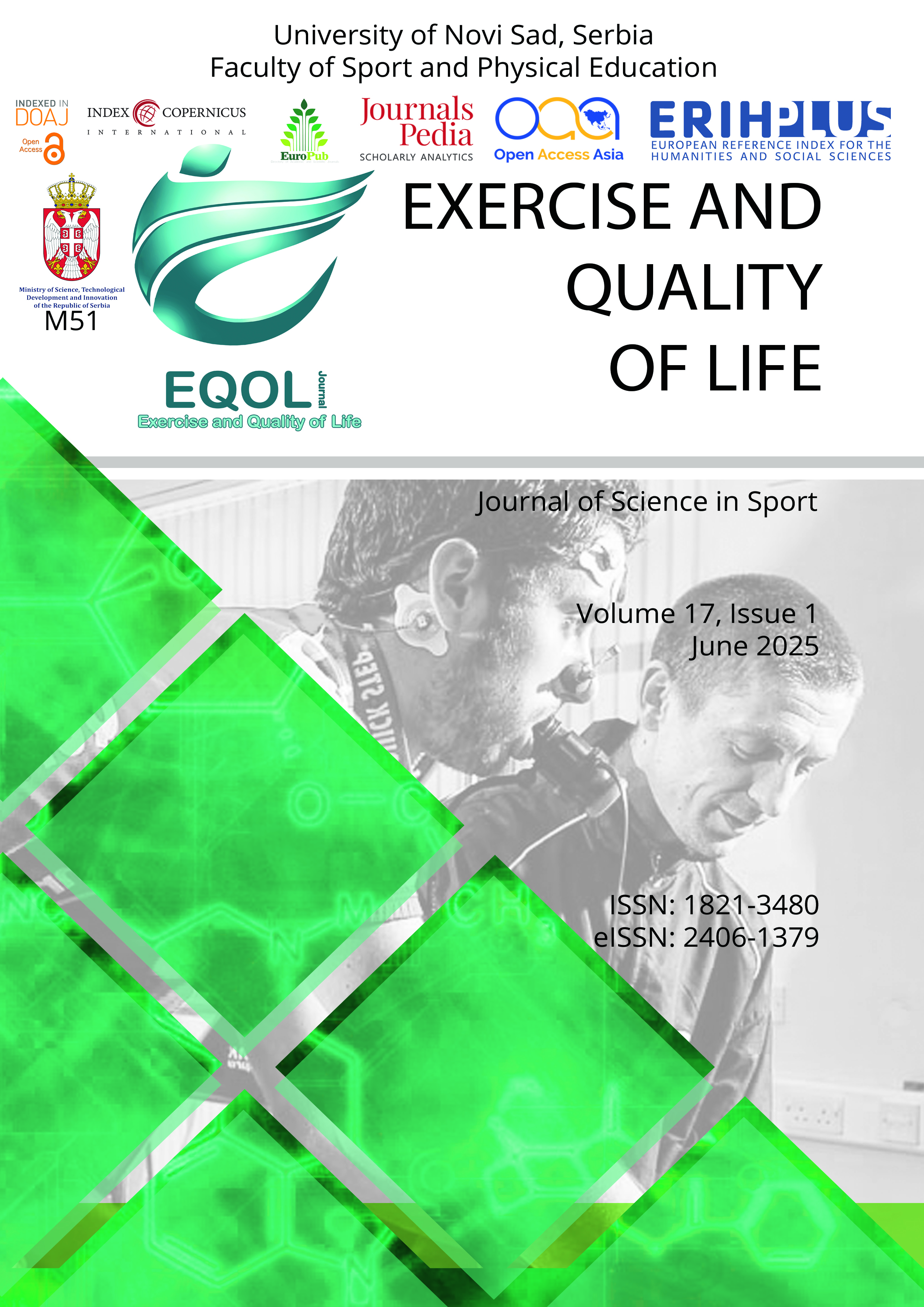Current issue

Volume 17, Issue 1, 2025
Online ISSN: 2406-1379
ISSN: 1821-3480
Volume 17 , Issue 1, (2025)
Published: 15.06.2025.
Open Access
All issues
Contents
02.12.2012.
Original scientific paper
THE EFFECTS OF BALANCE TRAINING ON BALANCE ABILITY IN HANDBALL PLAYERS
The purpose of the present study was to investigate, the effectiveness of a balance
training program in male professional handball players. Thirty professional handball players
were randomly divided into experimental and control group. The experimental group (N=15), additional to the training program, followed an intervention balance program for 12 weeks. All
subjects performed a static balance test (deviations from the horizontal plane). The results
revealed that the 12-week balance training program improved (p<0.01) all balance performance
indicators in the experimental group. Thus, a balance training program can increase balance
ability of handball players, and could used as a prevent tool for lower limbs muscular skeletal
injuries.
Asimenia Gioftsidou, Paraskevi Malliou, Polina Sofokleous, George Pafis, Anastasia Beneka, George Godolias
01.06.2011.
Original scientific paper
THE EFFECT OF STRENGTH TRAINING ON TENNIS SERVICE PERFORMANCE OF JUNIOR TENNIS PLAYERS
The purpose of the present study was to evaluate the effect of a 7-week shoulder specific strength training program additional to tennis training sessions on the service velocity of junior tennis players. Initially 60 junior tennis players (29 boys and 31 girls) with at least 2 years of tennis experience and never followed a routine strength program, volunteered to participate in the study. All the subjects followed a regular tennis training session (75 min). The subjects were randomly assigned into three groups: i) group-A, which practiced in addition 15 min service after the tennis session, ii) group-B which practiced a 7-week strength training program (15 min per session, 3 times per week) after the tennis session, and iii) a group-C, control group, which did not follow any extra programs after the tennis session. Two-way repeated measures analysis of variance was performed to detect differences in each group before and after the experimental period. The independent variable was the group (two experimental groups with different training protocol and the control group with only tennis training), and the repeated factor was the ìtestî (pre and post test, before and after the training period). Statistical significance was accepted at p<.05. It was measured an overall significant quantitative improvement on service performance while, the qualitative findings showed significant improvement in service technique only in group A.
Paraskevi Malliou, Dimitris Papadimitriou, Vasiliki Malliou, Anastasia Beneka, Georgios Pafis, Christos Katsikas, Stiliani Roka, Ioannis Fatouros























